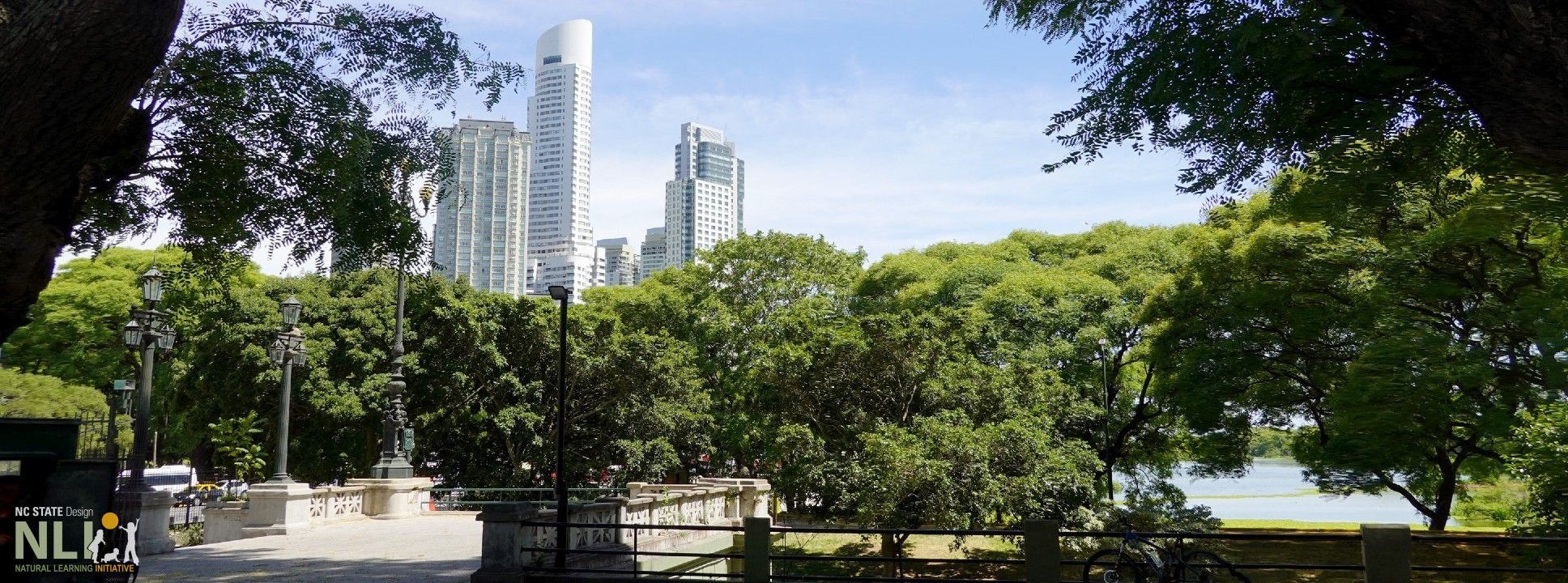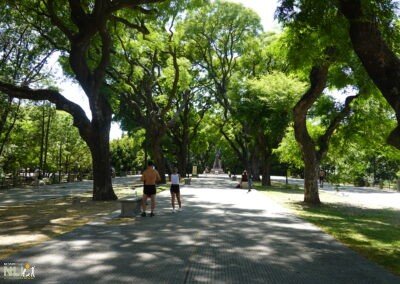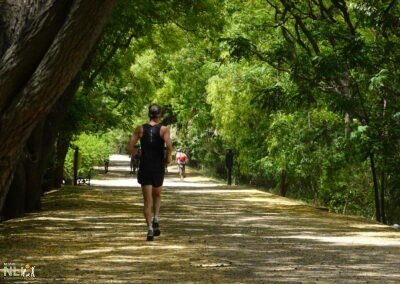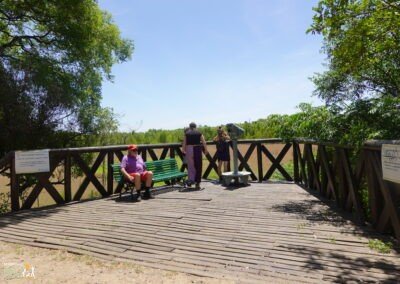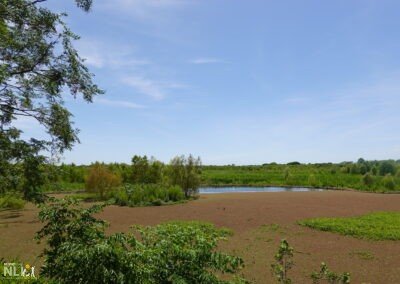Buenos Aires Ecological Reserve
The regenerative power of nature continues to inspire NLI’s passion for restoring biodiversity to hundreds of patches of dirt to support the thriving of human life. A dramatic example is the Buenos Aires Ecological Reserve, worked on by NLI cofounders, Robin Moore and Nilda Cosco, in the early 1990s. Ironically, this magnificent 860-acre aquatic ecosystem originated inadvertently during the last military dictatorship when the city mayor decreed the demolition of thousands of homes to make way for a city highway. The resulting rubble was dumped along the River Plate – Dutch polder style – to extend the lopsided city center land mass. When the military regime collapsed, nature was already claiming the polders and enclosed freshwater lagoons.
In 1986 the city council granted protection for the evolving ecosystem. Nonetheless, a new mayor proposed filling in the lagoons to implement the original concept, fortunately unsuccessfully before he left office. Recognizing the Reserve’s vulnerability, in 1994 Vida Silvestre (national wildlife conservation organization), commissioned Moore and Cosco to engage stakeholders in creating the first site documentation and master plan proposing modest infrastructure improvements. Focal settings included entrances, trails, and a series of 19 balcony lookouts or miradores penetrating the thickly vegetated lagoon edges, enabling visitors to relax, de-stress, and observe otherwise invisible wildlife.
During a 2022 end-of-year summer sojourn in Buenos Aires, 30 years later, we mingled with a cross-section of city residents strolling, jogging, and biking along the elevated polder trails, now enclosed in cool, green canopy tunnels. Timeless miradores still afforded rest, immersion in nature – and tranquility in utter contrast to the Reserve’s birth during a dark chapter of Argentine history.
Télam drone flyover of the Ecological Reserve
View across one of the Ecological Reserve freshwater lagoons to high-density Buenos Aires central city.
Additional Resources
- Davis, B. 2019. The asymmetry of landscape – Aesthetics, agency, and material reuse in the Reserva Ecológica de Buenos Aires
- Hoyt, J. 2014. Memory and Origins of the Reserva Ecologica, Buenos Aires
- Moore, R. & Cosco, N. 1994. Mejoras a la infraestructura (Infrastructure Improvements) – Reserva Ecológica Costanera Sur

